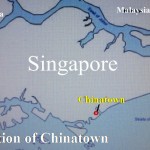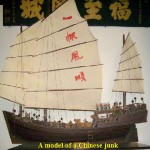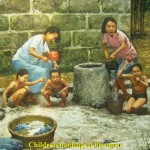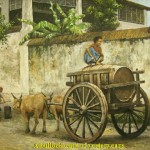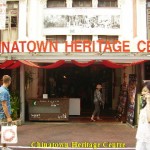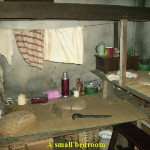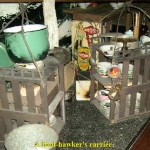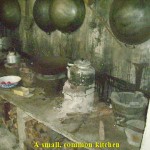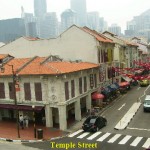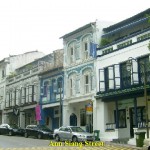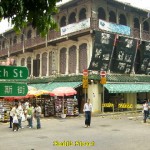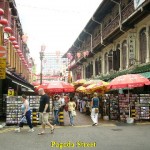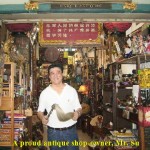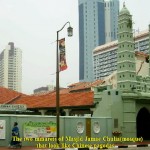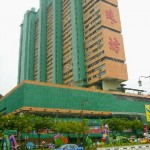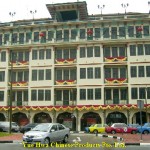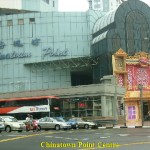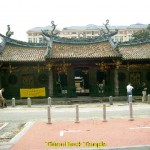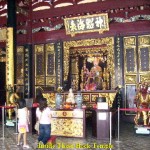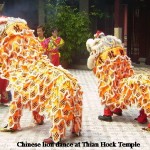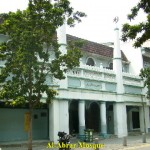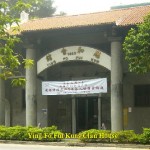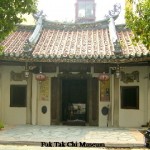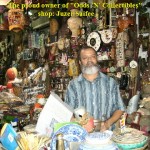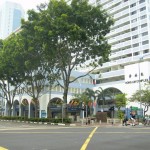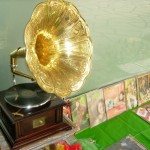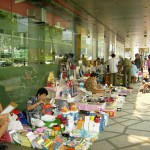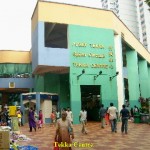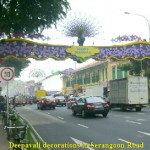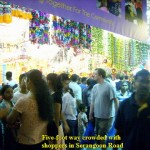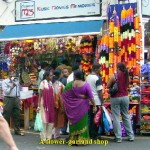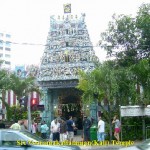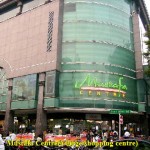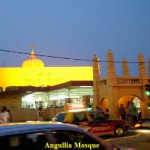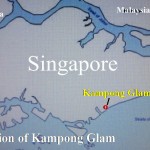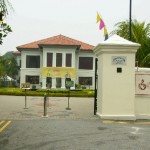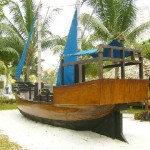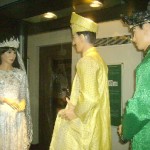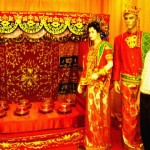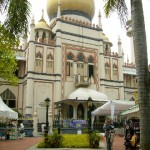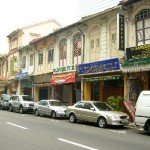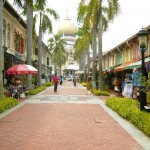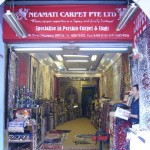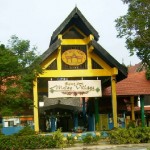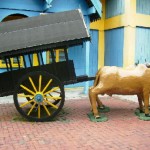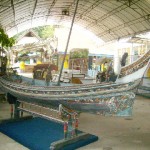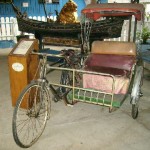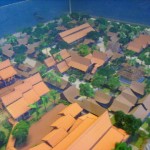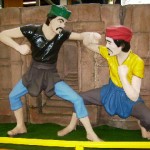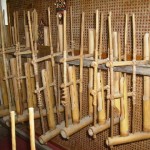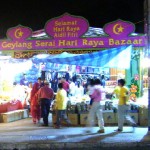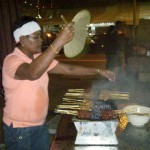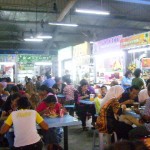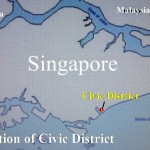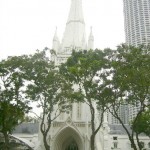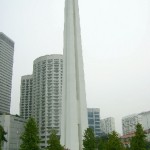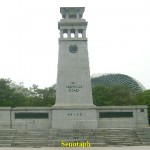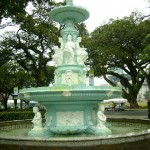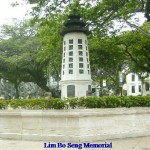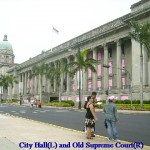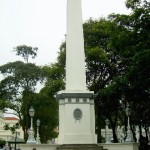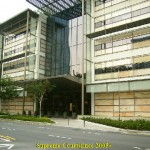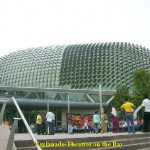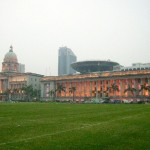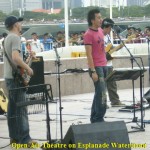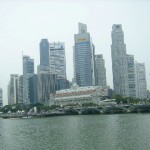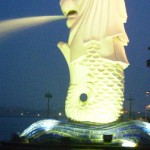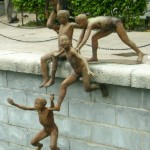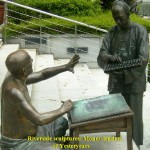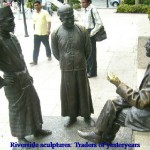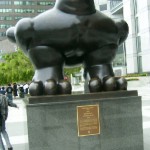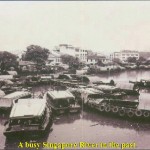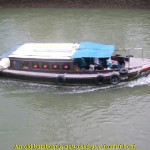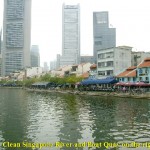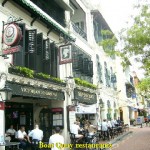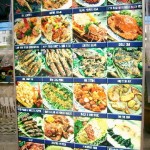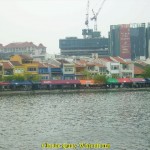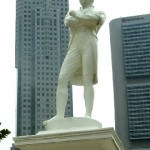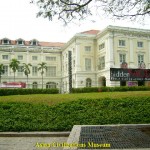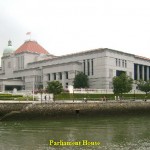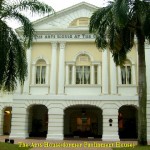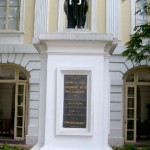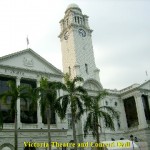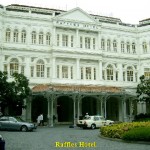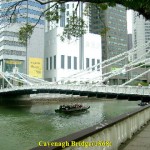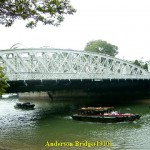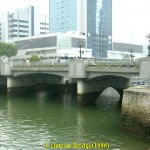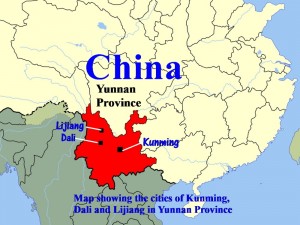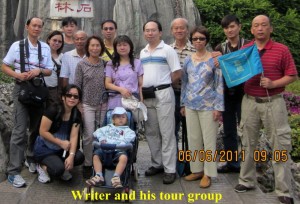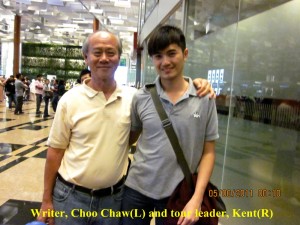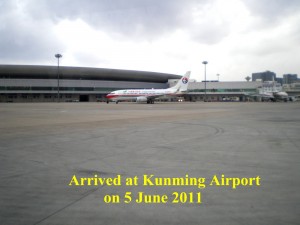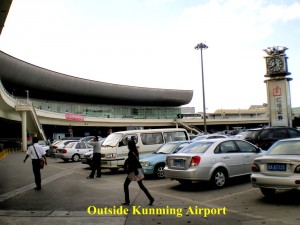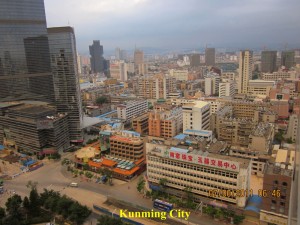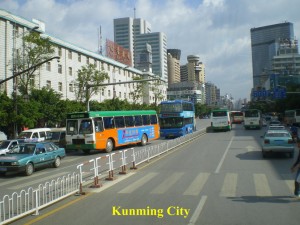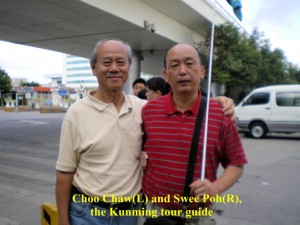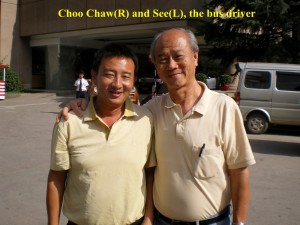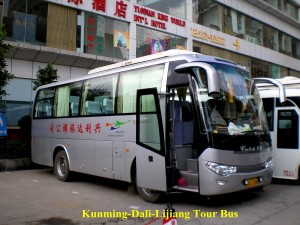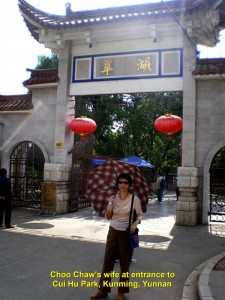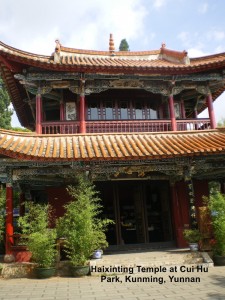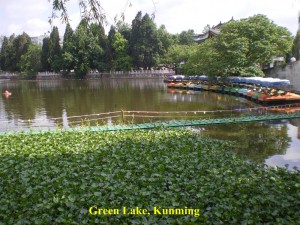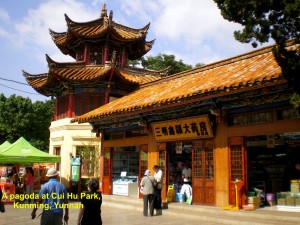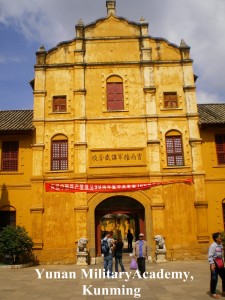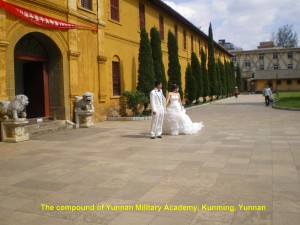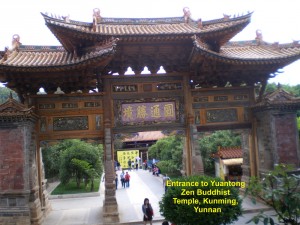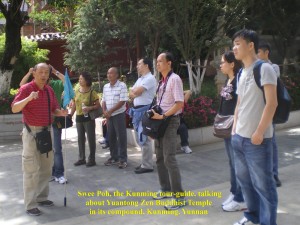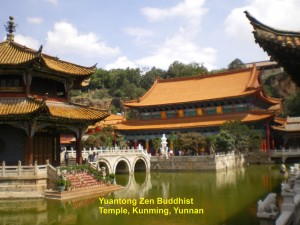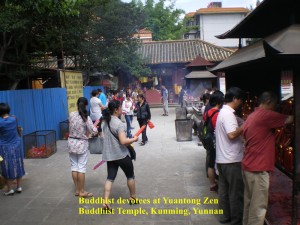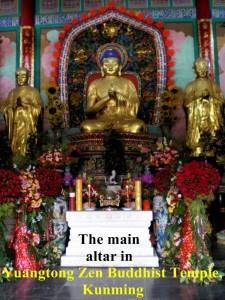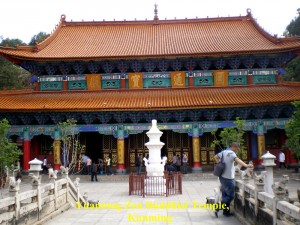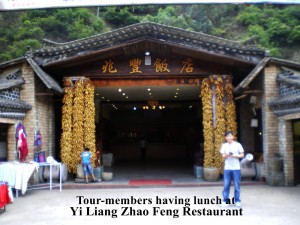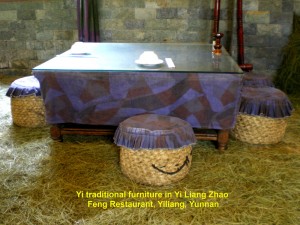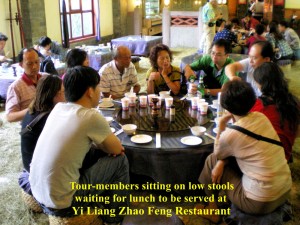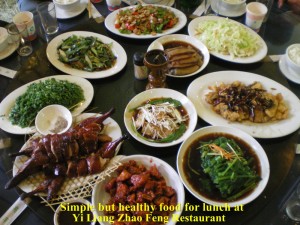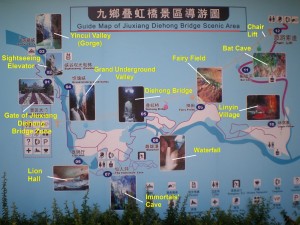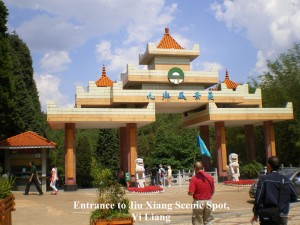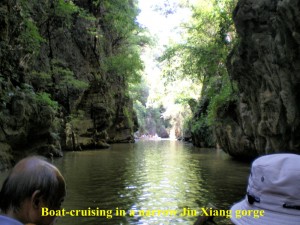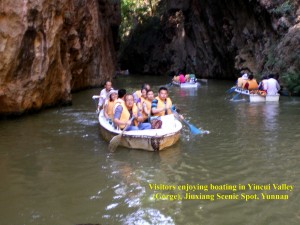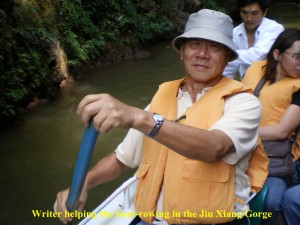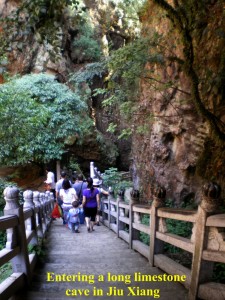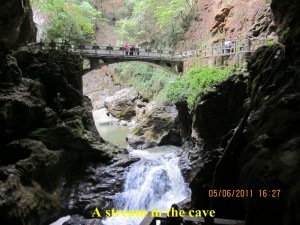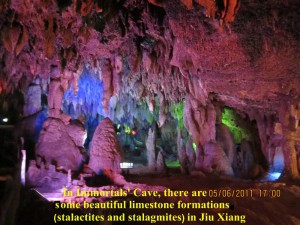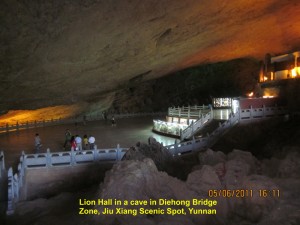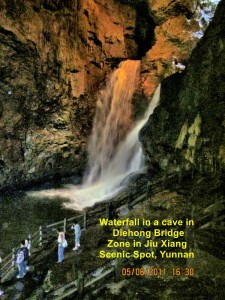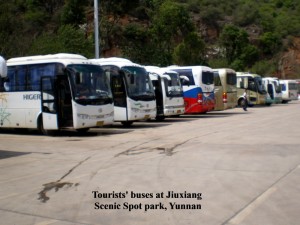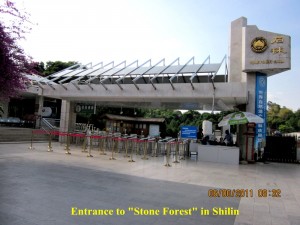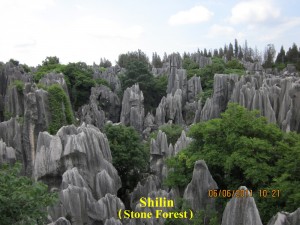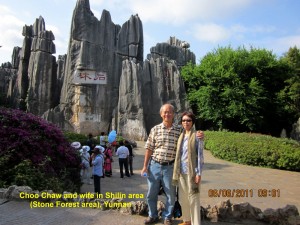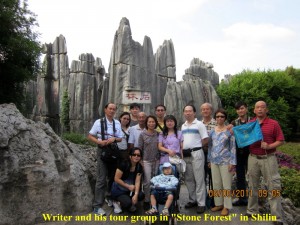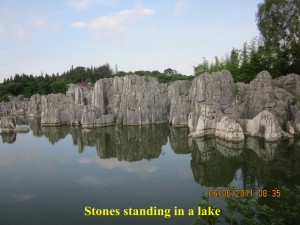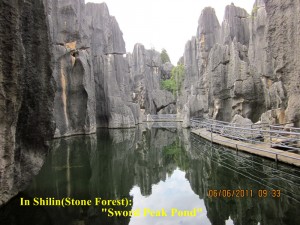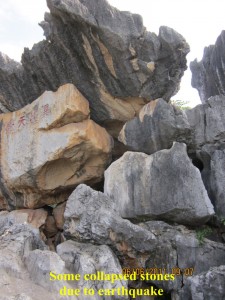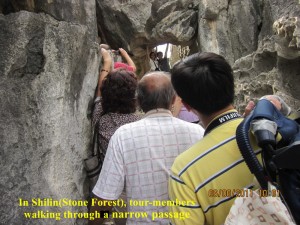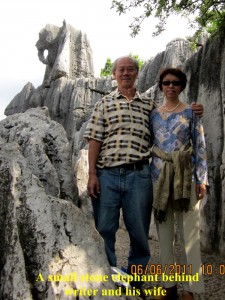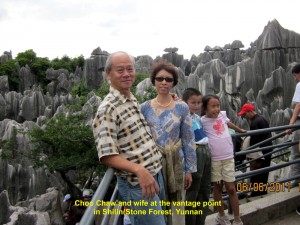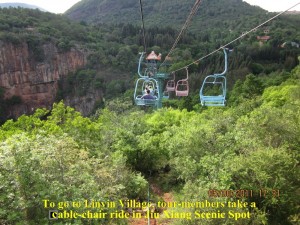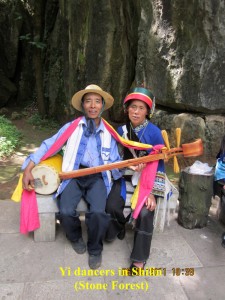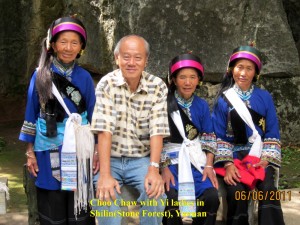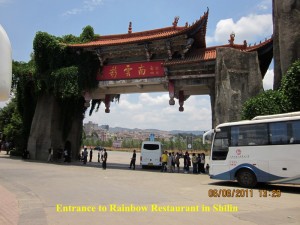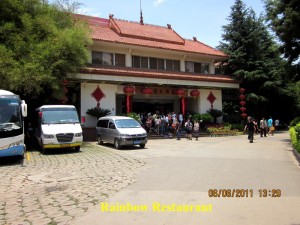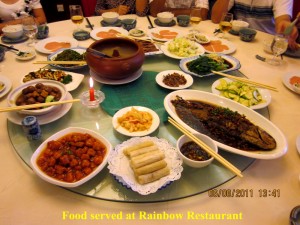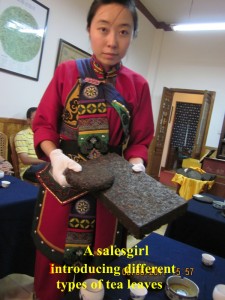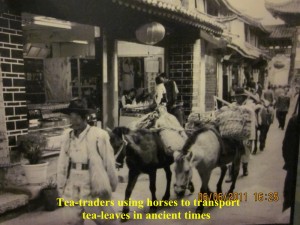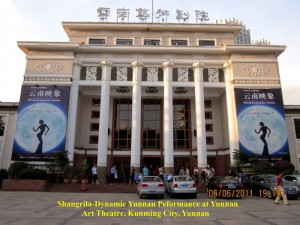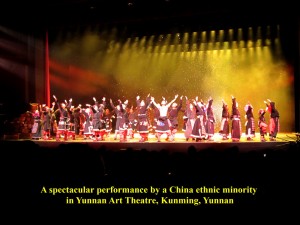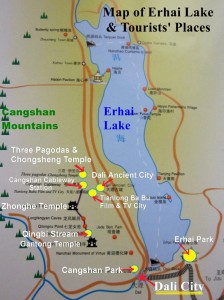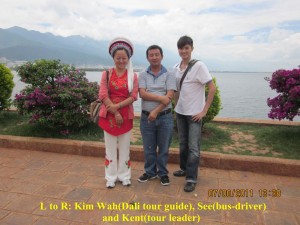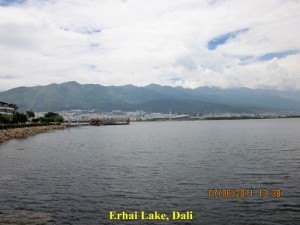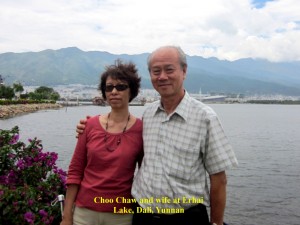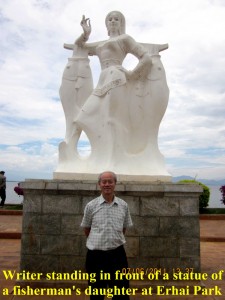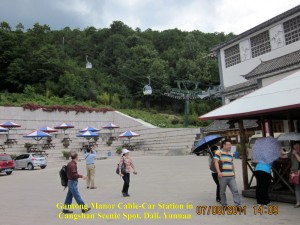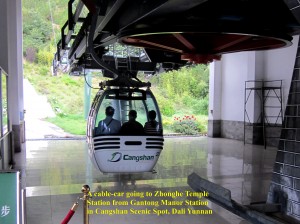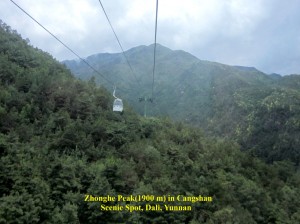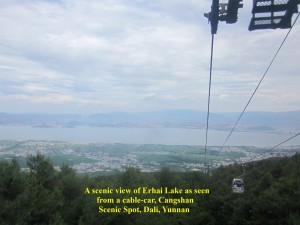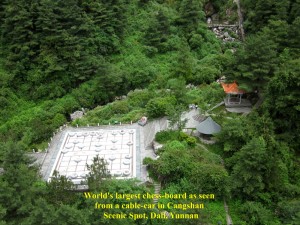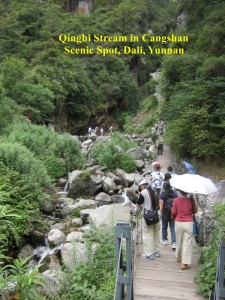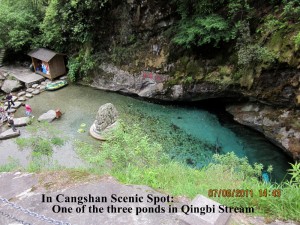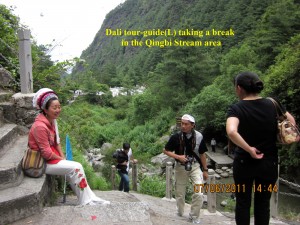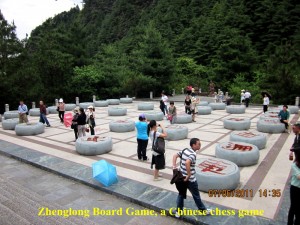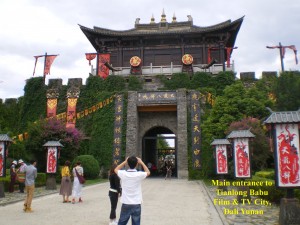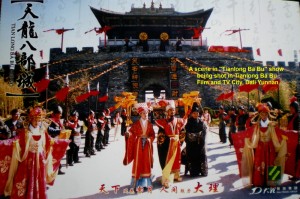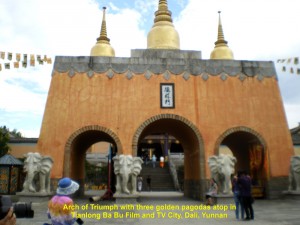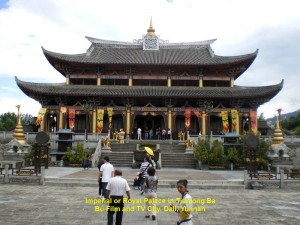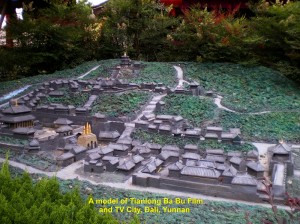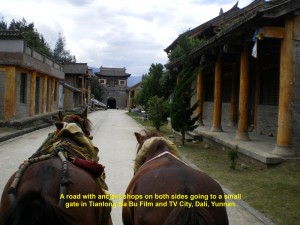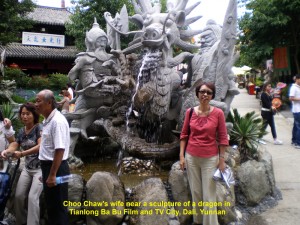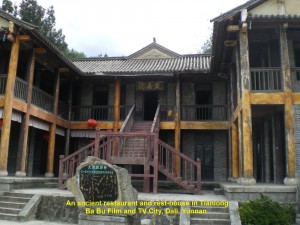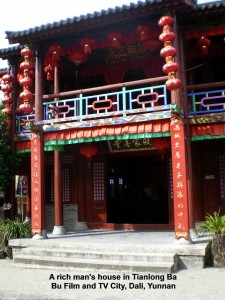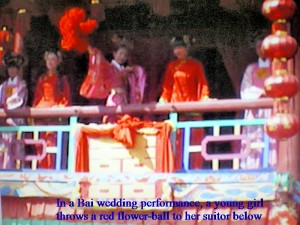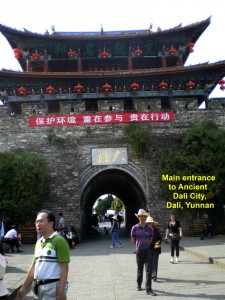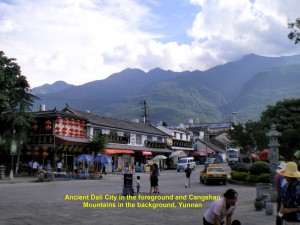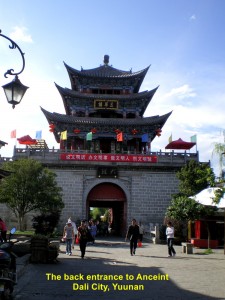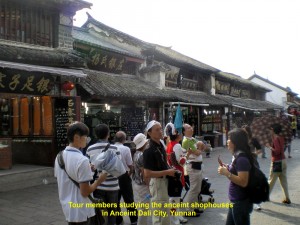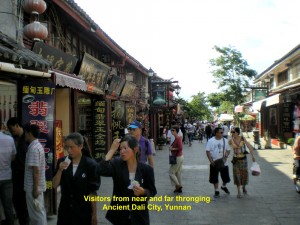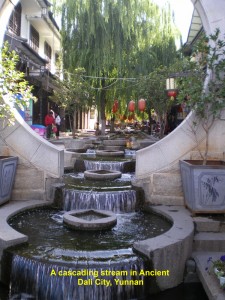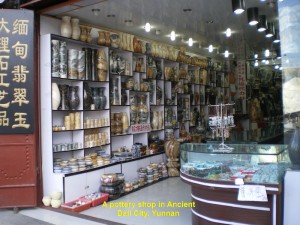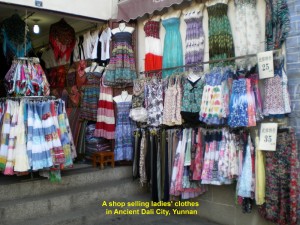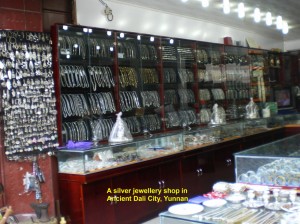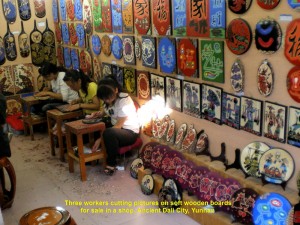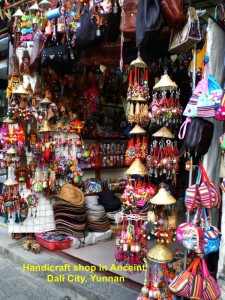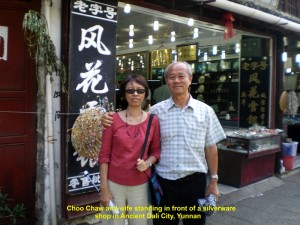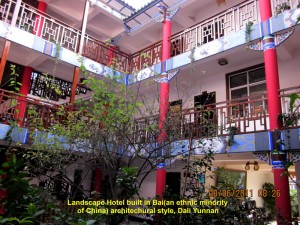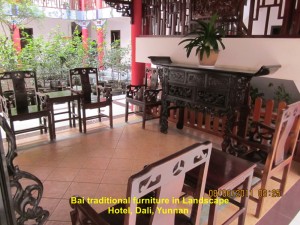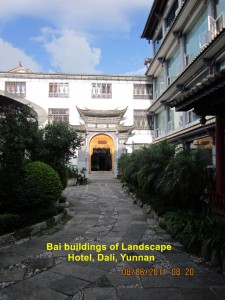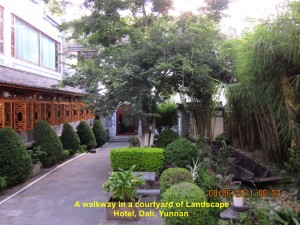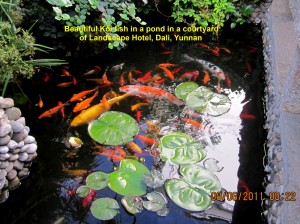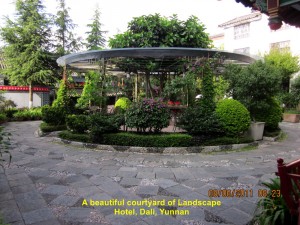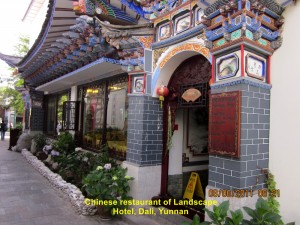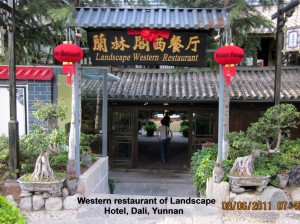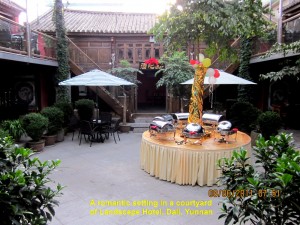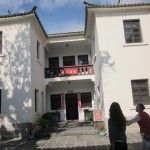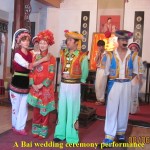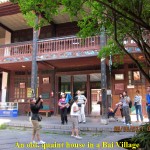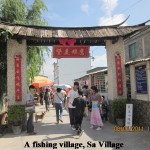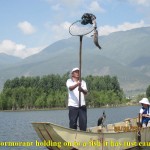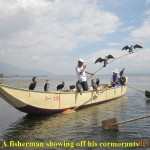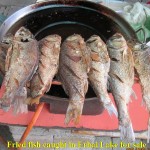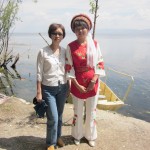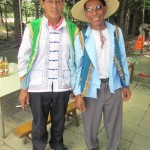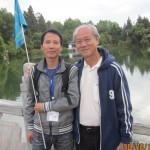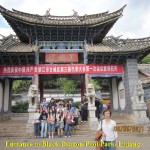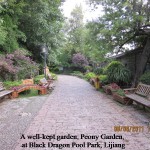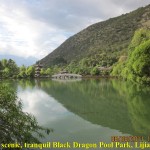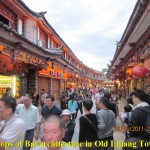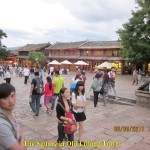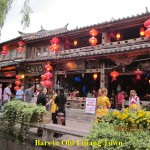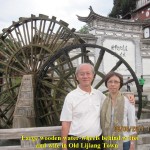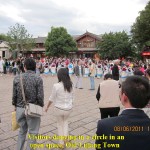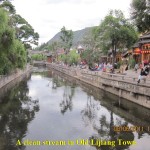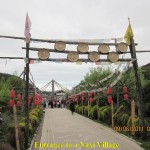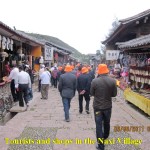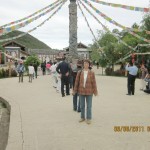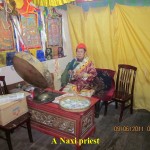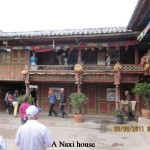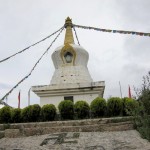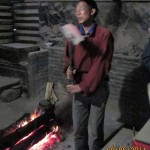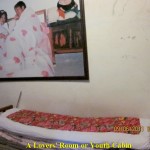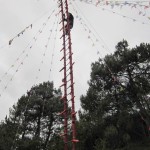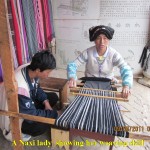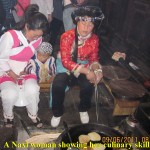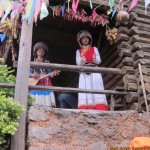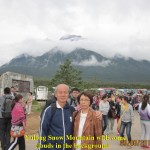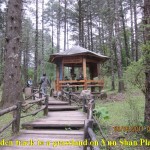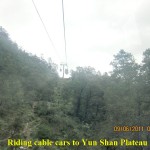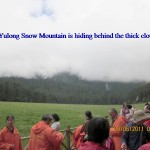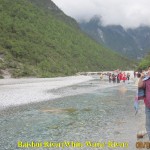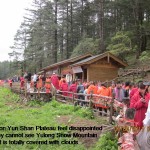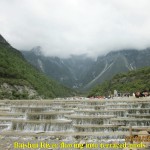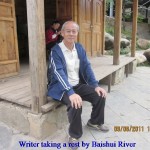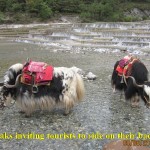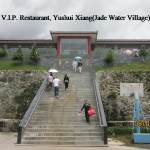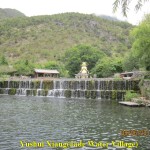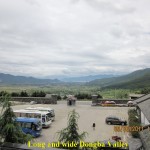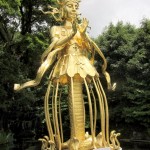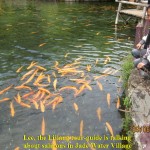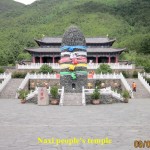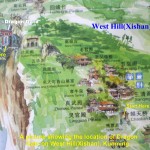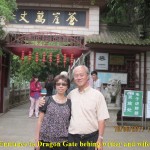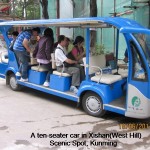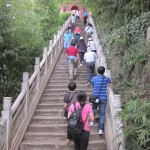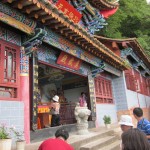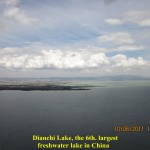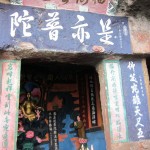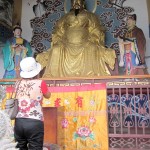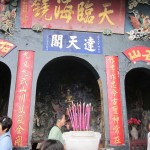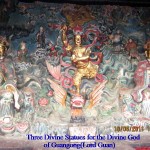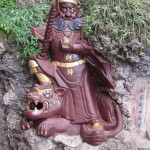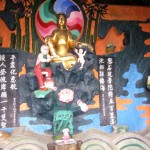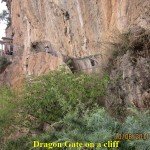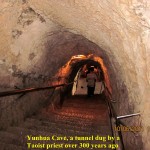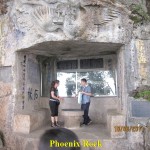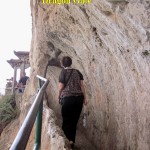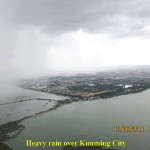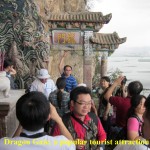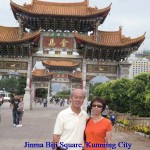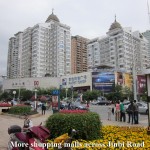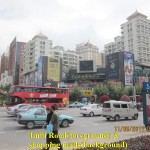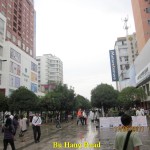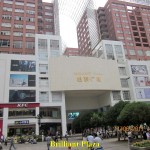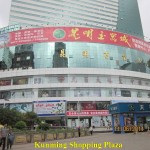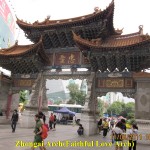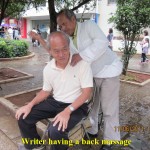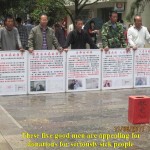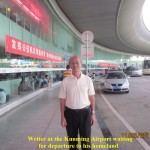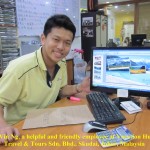Singapore Heritage Trail I
Filed under: Singapore Heritage Trail I (Chinatown & Little India)
Singapore Heritage Trail I
(Chinatown and Little India)
On a Singapore Heritage Trail
In 2006, I paid a visit to Singapore, a tiny nation, to learn about her rich history and diverse cultures. It took me a few days to visit four heritage places which are rich in histories and cultures. The four places are Chinatown, Little India, Kampong Glam-Malay Village and Civic District. Located in the south-east of Singapore Island, all these places are close to each other.
Below is what I have written about them and hope that most of the information given is still relevant:
1. Chinatown
Chinatown is located south of River Singapore. It was the first settlement for the Chinese immigrants. It was established around 1821 when the first junk which carried men from China arrived at Telok Ayer(Water Bay).
Before piped water supply was introduced in Chinatown, bullock carts were used to carry water from a nearby source called Ann Siang Hill to Chinatown. So the local Chinese called Chinatown “Niu Che Sui“, literally, it means “bullock-cart water”.
Chinatown Heritage Centre
To learn about the history of Chinatown and the stories of the Chinese immigrants, I went to the Chinatown Heritage Centre in Pagoda Street in Chinatown. It is a small museum of three restored pre-war shophouses.
Owing to poverty, famine, poor harvest of crops, drought, wars and corrupted rulers in China in the 1800’s, many Chinese migrated to the countries in South-east Asia, including Singapore. They hoped to make a fortune in the new countries and later return as a wealthy person.
The early immigrants came to Singapore in junks and later steamships. They had to endure a 7-week long and dangerous journey in vessels that were overcrowded and lacking amenities. Some unfortunate ones died in their journeys. Those who arrived at Singapore were uncertain of their future.
Many Chinese immigrants who came to Singapore realized that it was hard to make a living there. They worked as coolies, rickshaw-pullers, samsui women, food-vendors, tailors, clerks, shopkeepers, cooks, etc. Many succumbed to vices and had no money to go back to China. The hardworking ones became wealthy and made the island a progressive and prosperous country.
Squalid Living Conditions
In the olden days, many poor immigrants had to live in small cubicles in overcrowded shophouses. The latter had narrow corridors and small, dirty and black common kitchens. Looking at the squalid living conditions recreated in one of the shophouses at the Chinese Heritage Centre makes me feel sympathetic for the early immigrants.
In the past, there were small numbers of other races living in Chinatown, including Indians, Malays, Arabs and Japanese. Hence, it was a multi-ethnic and multi-cultural place.
Since 1900’s, many dilapidated pre-war shophouses in Chinatown were demolished. High-rise residential buildings and multi-storey complexes were built to replace them. The remaining old ones have been restored by the combined efforts of the owners and government. These quaint and well-restored buildings are now a tourists’ attraction in Chinatown.
It is worth visiting the Chinese Heritage Centre in Pagoda Street to learn about the Chinatown’s rich history and cultures.
Pagoda Street
It is intersting to know how Pagoda Street got its name. The Chinese saw the two minarets of a mosque, Masjid Jamae Chulia, at the end of the road that looked like Chinese pagodas. So they named the road Pagoda Street
While walking down Pagoda Street, I saw many shops and stalls in the street selling a myriad of things ranging from Asian antiques, Chinese paintings, souvenirs, clothes and cheap watches to digital cameras, cell-phones, MP3 and MP4 players. The street was crowded with both locals and tourists.
In the olden days, Pagoda Street was an infamous place for opium dens, gambling, prostitution, secret societies and slave trade. Many coolies squandered their hard-earned money on the vices, ending their dream of becoming rich and returning to their families in China. That street was the biggest residential area for coolies as the rental for a small cubicle in a shophouse was cheap.
There are a few large old shopping centres in Chinatown. Some of these are shown in the photos below:
Telok Ayer Street
This street is in Chinatown. It was once along a shoreline of the coast of Singapore. In 1821, the first Chinese junk, carrying immigrants from China, arrived in the bay. Then the immigrants set up their homes along Telok Ayer Street. Later immigrants from other countries, especially southern India, arrived there. That street then became an important commercial centre. In 1879, land was reclaimed from the bay, and roads, shophouses, clan association buildings, Chinese temples and a mosque(Al-Abrar Mosque) were built on it.
Thian Hock Temple
One of the oldest temples was built in Telok Ayer Street. It is known as Thian Hock Temple which houses a shrine to Ma Cho-Po (Mazu or Goddess of the Sea). The deity was brought from Fujian Province in China in 1840. According to a legend, Ma Cho-Po (960 A.D.-987 A.D.) was a daughter of a fisherman. One day, she sensed that her father and brother were in danger at sea during a storm. She quickly took a small boat and went to save them. But she was able to save her father only. When her whole village knew about her brave act, they worshipped her as a goddess of the sea, and the seafarers asked her for protection before sailing at the sea.
Al-Abrar Mosque
Originally, this mosque in Telak Ayer Street was a small thatched hut built by Indian Muslims in 1827. Later, it was rebuilt in 1850-1855. It is a simple-looking mosque which has an Indian Islamic theme.
Fuk Tak Chi Museum
Fuk Tak Chi (literally, it means “Temple of Virtue and Prosperity”) was also one of the oldest temples in Singapore. Located in Telok Ayer Street, it was a small temple built in 1824. Now, it is a small museum which displays some old exhibits, such as old Chinese storybooks, hawkers’ licence fee receipts, family portraits, antique furniture, weighing machines, iron that used charcoal, Chinese paintings and calligraphy, tea cups and pots and a model of Chinese junk. These things were donated by local residents.
Clan Association Buildings
Telok Ayer area has some social and meeting centres for the various Chinese clans and dialect groups. Many clan association buildings were built here to meet the needs of the immigrants like the social, cultural and political needs. An example of a clan association is Ying Fo Fui Kuns Clan House which was built in 1822. It is near Fuk Tak Chi Museum and caters for the Hakka members.
- Juzer Saifee, the proud owner of Odds ‘N’ Collectibles shop
There is a small shady garden, known as Telok Ayer Green, in Telok Ayer Street. It is next to Thian Hock Temple. in this garden, there are some interesting bronze sculptures depicting the immigrants’ activities in the past, as shown in the photos below:
An Antique Shop
While I was walking along Telok Ayer Street, I saw a shop at cluttered with lots of old things. Out of curiosity, I entered the shop. On closer look, I realized that most of the things on display were very common in every household in my childhood days, like clocks, cutlery, furniture, vases, stamps, money-notes, etc. These things can be considered as antigues now.
The shop known as Odds ‘N’ Collectibles, at 128, Telok Ayer Street, belongs to a bearded man, Juzer Saifee. He buys and sells secondhand things. He told me he had been in this business for over 10 years.
“Sook Ching”
In the city, right in front of Hong Lim Complex along Cross Road, I saw a notice-board that shocked me after reading its information. It says:
“This site was one of the temporary registration centres of the Japanese Military Police, the Kempeitai, for screening anti-Japanese Chinese.
On 18th. February 1942, three days after their capture of Singapore, Kempeitai launched a month-long purge of anti-Japanese elements in an operation named “Sook Ching”. All Chinese men between 18 and 50 years old, and in some cases women and children, were ordered to report to their temporary registration centres for interrogation and identification by the Kempeitai and their hooded informants. Those who failed the arbitrary screening were taken to outlying parts of Singapore and executed for alleged anti-Japanese activities. Tens of thousands were estimated to have lost their lives.
For those who were spared, the “Sook Ching” screening remains one of their worst memories of the Japanese Occupation.”
As I was reading the notice, I started to picture the unfortunate Chinese being taken away for the gruesome execution. It sent a shiver down my spine. The merciless conquerors had committed cruelty against humanity.
As I was walking further down Cross Road, I was pleasantly surprised to see a flea market in Far East Square where local people spread their secondhand goods on the floor for sale. They included old gramophone, records, story-books, magazines, antiques, clothes, Mao Tze Dong’s photos, letters, documents, watches, furniture, jewelleries, etc. This flea market is open only on Sundays.
Little India – Tekka Centre
To visit the Little India which is in the east of the Singapore River and learn about the Indian heritage, I took an MRT train to Little India Station. On arrival, I came out of the station and walked to Serangoon Road. On the way to the road, I came across a large green and yellow building, Tekka Centre, and decided to have a meal there.
It houses a wet market which meets the daily needs of the local people who live in HDB flats. Vegetables, fruits, fish and meats are easily available here. Next to the wet market is a hawker centre where one can savour a variety of local food. Above the hawker centre are several shops which sell inexpensive apparel, shoes, watches, etc.
After having a hearty meal with a bowl of “ais kacang” as dessert at the Tekka hawker centre, I continued my walk to Serangoon Road. As the Indian Festival of Lights or Deepavali was approaching, the road was already heavily decorated with arches, figures of phoenixes and coloured bulbs. When the sun set, the road was colourfully-lit and local Indians thronged the shops to buy the things they needed for their festival.
Serangoon Road
Serangoon Road is one of the oldest roads in Singapore. As the Serangoon area was a fertile plain, it attracted Indian immigrants to grow rice, gambier and coconut. Later, cattle-rearing and horse-racing became the main economic activities there. As more Indians settled at the place, it became an ethnic community known as “Little India”.
Old, quaint and beautifully restored shophouses line both sides of the busy road. Most of the shopkeepers here are Indians. They sell flower-garlands. jewelleries, silver and brassware, spices, saree fabrics, spicy vegetarian and banana leaf meal, electrical and electronic goods and more.
Along Serangoon Road are two popular places of worship as described below:
a. Sri Veeramakaliamman(Kali) Temple
Located along Serangoon Road. is the largest Indian temple in Singapore. It is known as Sri Veeramakaliamman Temple. It houses a black statue of Kali, the Goddess of Power, an incarnation of Lord Siva’s wife. She has many arms which hold weapons of destruction and is flanked by her sons, Ganesha and Murugan.
This temple was first built in 1855, and in 1908 it was expanded. The prominent feature of the temple is the tall entrance tower which has many colourful statuettes of deities and mythological animals. The main door of the temple has many bells. Hoping to have their requests granted, devotees will ring these bells first before entering the temple.
b. Angullia Mosque
Not far from the above-mentioned Hindu temple is a mosque, Anguilla Mosque, where the Indian Muslims pray. It is a simple looking mosque and was built in 1898 on a land belonging to the wealthy Anguillas, a family of Gujerati traders.
Mustafa Centre
As I was walking along Syed Alwi Road, I stopped at a well-known shopping complex, Mustafa Centre. It was opened in 1973. When I was in the building, I was awed to see every floor full of goods. A shopper will have no problem of getting anything he wants here and it is open 24 hours everyday.
(continued on Singapore Heritage Trail II)
Singapore Heritage Trail II
Filed under: Singapore Heritage Trail II (Malay Heritage & Civic District)
(continued from Singapore Heritage Trail I)
Singapore Travel II
(Malay Heritage and Civic District)
3. Malay Heritage
To learn about the Malay heritage, I visited two places, viz. Kampong Glam and Geylang Serai.
Kampong Glam
Located at the mouth of the Rochor River, Kampong Glam was originally a Malay fishing village. It is named after a tree by the Malays. Its scientific name is melaleuca leucapan, a large tree that is used for making poles, posts, boats and other things.
In the past, Kampong Glam was a centre of Islamic Studies where the aspiring Muslims from neighbouring countries would prepare themselves for the pilgrimage to Mecca. Those who failed to make it were called “Haji Singapura“.
Kampong Glam was the first Malay settlement in Singapore designated by Sir Stamford Raffles in 1820’s. Sultan Ali Iskandar Shah built a two storey Palladian architecture-styled palace, Istana Kampong Glam, in 1840’s. It was believed that George Colemen designed the palace. It is located at the end of the road named Sultan Gate.
Istana Kampong Glam or Istana Sultan(Sultan Palace)
Istana Kampong Glam or Istana Sultan is now a museum showcasing the history and cultures of Malay and Bugis in Singapore. The Bugis were brave seafarers from the southern Sulawesi Island of Indonesia. They played a vital role in the Malay Sultanate’s politics by the 18th. Century. Some were appointed as viceroys and married into the Malay royalty.
The museum houses several galleries such as the history and cultures of the Singapore’s Malays, Bugis seafarers, Malay royalty, Malay entertainment industry, and many more. Below are some of the photos taken at the Istana Kampong Glam (museum):
Sultan Mosque
Built in 1824 near Bussorah Street was Sultan Mosque. It was built by Sultan Hussein Shah with donations from Sir Stamford Raffles and the East India Company. In 1924-1928, the mosque was rebuilt to replace the old one. It is the largest mosque in Singapore. The local Muslims consider it to be the grand national mosque in Singapore. It has a large golden dome that is easily seen from far.
In front of the mosque is Bussorah Street where the old, quaint two-storey shophouses sell souvenirs, apparels, curios, postcards, traditional Malay cuisine, artefacts, handicrafts, etc.
Arab Street
In the early years, the Arab immigrants set up shops along Arab Street. The area around Arab Street, Baghdad Street and Bussorah Street was once a cultural and historical centre of Islamic life. Many quaint and restored buildings still remain in this area. They are now shops which sell Islamic things such as skull caps and prayer rugs, carpets from the Middle East, traditional batiks from Malaysia and Indonesia, textiles and other goods from Japan, Korea and Europe. Jewellery, artefacts, handicraft and furniture are also sold here.
Geylang Serai
Having visited the Istana Kampong Glam museum, I went to another museum, Malay Village or Malay Heritage Centre, in Geylang Serai, to learn more about the Malay heritage. To go there, I took an MRT train to the Payar Lebar Station. Then I walked a short distance to Geylang Serai where the indigenous Malays have lived since 1840’s.
Malay Village (The Malay Heritage Centre)
Tthe Malay Village covers an area of 2.2 hectares which was opened in a grand style in 1996. It is truly built like a Malay village with its entrance in a shape of a horn-roofed Minangkabau structure.
The Malay Village showcases all aspects of the Malay culture and tradition in Singapore such as kampong life in the 1950s-60s, musical instruments, bridal chambers, house or thatched house on stilts, weapons, arts, handicrafts, fishing equipment, famous Malay singers, prominent Malay political leaders and more.
Below are some of the photos taken at the Malay Village featuring the Malay culture:
More photos of the Malay culture below:
At the Malay Village, there are Malay kampong shops selling souvenirs, traditional herbs, batiks, baju kurung etc. and an open-air food court where Malay delicacies are served, such as sizzling grilled meat and noodle soup with shredded chicken meat.
Geylang Serai Bazaar and Market.
As it was the Muslims’ fasting month of Ramadan in 2006, the streets in Geylang Serai were decorated with coloured bulbs, arches and objects in the shapes of a crescent moon and star. When night fell, the whole place was brightly-lit and streets were crowded with people. In fact, there was an atmosphere of festivity then. Some local Muslims could be seen breaking fast at food-stalls at the Geylang Serai Market or bazaars while others busy shopping for new shoes, clothes, artificial flowers, cookies and other things for the birth of the new moon of Syawal or Hari Raya Puasa.
4. Civic District
On the following day, I took an MRT train to the City Hall MRT station to visit the Civic District in the city centre. It is one of the tourists’ favourite destinations in Singapore. It is located at the mouth of Singapore River and on the northern bank of the river stretching from the river mouth to a few km inland. This district is rich in history. There are many historical landmarks which are the legacies of the British colonial rule in this area.
When I was in the Civic District, I tried to visit as many landmarks as I could, including those mentioned below:
St. Andrew’s Cathedral
As I was walking along St. Andrew Road for a short distance from the City Hall MRT station, I saw the first historical building. It was a majestic, white church built in the early English Gothic style. It has spires of over 60 metres tall.
The church is known as St. Andrew’s Cathedral and is the Singapore’s oldest Anglican church. Indian convict labour was used to build it between 1856 and 1864 replacing the old one which was damaged by lightning twice. The damaged old church was rebuilt in 1834-1837.
In the colonial days, the church was mostly patronized by the elite. Walking inside the large nave of the church, I could see many plagues on the walls that were dedicated to important people in the past. This church was gazetted a monument in 1973.
Monuments
a. Civilian War Memorial
While walking to Stamford Road, I saw four identical columns of about 70 metres tall standing close to each other in a garden. They were erected in dedication to the civilians of the four main races (Chinese, Malay, Indian and others) who were killed during the Japanese Occupation in Singapore (1942-1945). An urn containing the ashes of unknown victims is placed in the middle of this simple but sombre monument that is known as Civilian War Memorial. Leaving the civilian war monument, I walked towards south and came across more monuments. Below are some of them:
b. Tan Kim Seng Fountain
This Victorian cast-iron fountain was built by the Municipal Council in 1882 to commemorate a well-known trader and philanthropist, Tan Kim Seng, who had contributed much to the well-being of the society. He had made a large donation to the Singapore Waterworks to alleviate the water problem in the city.
c. The Cenotaph
This tower-like structure was erected in 1922 in memory of those who perished in World War I (1914-1918) and it is also dedicated to those fallen soldiers in World War II (1941-1945).
d. Lim Bo Seng Memorial
This pagoda-like structure with four bronze lions standing in guard was built in 1954 in memory of a Singaporean hero, Lim Bo Seng. He led Force 136, an anti-Japanese resistance movement, in World War II. In 1944 he was captured by the Japanese in Malaya. The latter tortured him to death as he refused to reveal his fellow resistance fighters. After the war, he was buried in Singapore with full military honours.
f. The Dalhousie Obelisk
This tall pointed stone pillar was erected to commemorate the visit of Governor-General of India, Lord Marquis Dalhousie, and his wife in 1850 when Singapore was a thriving port. The local rich merchants donated money to build that structure in the hope that his visit would lead to great improvements in public works, amenities and the administration of Singapore. Later, they were disappointed as nothing concrete materialized from their wish.
City Hall
Later, I walked to a road, Connaught Drive, where I could see across a green field (locally known as “Padang”) two large old stately buildings with Corinthian columns standing next to each other. The one with a green dome is the Supreme Court whereas the other the City Hall.
Built in 1929, the City Hall was formerly known as the Municipal Building. It was renamed as City Hall in 1951 when Singapore was conferred city status by King George VI of Englnd. This building will become a national art gallery by 2010 as part of the civic and cultural district.
Supreme Court
Supreme Court was built in 1937-1939 next to the City Hall. It was the former courthouse of the Singapore’s Supreme Court. On 20 June 2005, the Supreme Court was moved to a new building just behind it. The old building is planned to become an arts and cultural centre in future.
New Supreme Court
The new supreme court in sharp contrast to the old one, architecturally. It is modern in appearance. Built of steel, aluminium and glass, it has 9-storeys of 12 civil courts, 8 criminal courts and 3 appellant courts. Resting on top of the Supreme Court is a circular structure of 66m in diameter that looks like a flying saucer. It houses the court of appeal and has a public observation gallery where one can have a panoramic view of the Singapore River.
“Padang”
In front of the City Hall is a large green field which the local people call it “Padang”. It was here that the European civilians were ordered to gather and marched to Changi Prison, immediately, after the surrender of Singapore in 1941. Then four years later on 12 September 1945, ironically, the Japanese officers were made to march pass the “Padang” to City Hall where they surrendered, unconditionally.
Esplanade-Theatres on the Bay
Later, I walked towards east to Esplanade-Theatres on the Bay. Located on a six-hectare waterfront land by the Marina Bay and near the mouth of Singapore River, it was officially opened on 12 October 2002. It consists of two prominent and unique buildings which look like a thorny tropical fruit called “durian”. One of them houses the 1,600-seat Concert Hall and the other 2,000-seat Theatre. It is a performing arts and entertainment centre which boasts of world-class performances by local and international groups.
Besides, there is an open-air theatre on the 300-metres long waterfront outside the Esplanade. Free outdoor musical performances are held there on weekends.
Modern Buildings
As I was standing on the waterfront, I looked across the Singapore River and saw a spectacular view of several
awesome, tall and modern buildings, including UOB Plaza, UOB Centre, Sinsov Building, Maybank Tower, HSBC, OCBC Building and Capital Square. Some of these tall buildings are over 60 storeys high. They are in the central business district (CBD). The existence of these skyscrapers is a testament to Singapore’s fast growing economy in trade, commerce and finance.
Fullerton Hotel
The skyscrapers on the bank of Singapore River tower over a quaint but majestic building known as Fullerton Hotel. The building was first occupied by Singapore Club and Chamber of Commerce, then General Post Office and Inland Revenue Authority. Now it is a well-known five-star hotel.
Built in a neo-classic styled architecture in 1928, the hotel was voted the best hotel in Asia at the conde’ Nast Traveler Reader’s Choice Awards 2006 held recently in New York.
Merlion
When I was crossing the Esplanade Bridge over Singapore River, I saw a strange large white stone legendary animal. Located at the Merlion Park in front of Fullerton Hotel and the mouth of Singapore River, it has a head of a lion and scaly body of a fish. Its fish body is to remind people that Singapore was a fishing village before and its lion head tells the people that the nation gets its name from the Malay word “singa” which means “lion”. The Singaporean call this mythical animal “Merlion”. It is now Singapore’s icon. This animal keep on spouting water out of its mouth into the Marina Bay.
Riverside Sculptures
Strolling on the river bank, I came across some life-sized bronze sculptures seemingly involved in some activities in the olden days, such as a group of naked and playful children leaping into the Singapore River.
(Installed in 2000 and known as “The First Generation”), colonial trader, Chinese merchant, coolies, Indian money-lender (chettiar), financier, etc.
A unique modern sculpture of a large black fat bird by Fernando Botero was erected in 2000 at the back of the tall UOB building. It is a symbol of peace, serenity, joy of living and the power of optimism.
Singapore River : A Maritime Trading Hub
Singapore River is over 11 km long and flows through the city. It was once a lifeline of Singapore. During the British colonial rule, the port was at the river mouth. When Sir Stamford Raffles declared it a free port, trade flourished. More shophouses and warehouses were built at Boat Quay, Clarke Quay and other places along the river to cope with the increase in trade. Soon the river became the hub of trade, commerce and finance.
As trade had increased by leaps and bounds, larger and more ports were needed. Large terminals and harbours were built at other places to take over the maritime trading activities of the old port, such as Keppel Harbour, Jurong, Pasir Panjang and Sembawang. By the 1980’s, the river-mouth port ceased its operation.
Since wastes from residential, industrial and farm areas had flowed into the river for many years, it became smelly and dirty. In 1977, the government began to clean up the river. It took ten years to complete the task. Now the river is clean and has a pleasant sight. Speedboats and tourists’ cruise boats (bumboats) can now be seen plying on the clean river.
Bumboats
In the yesteryears, bumboats were used to carry goods to and from along the Singapore River between ships moored in the busy port at the river-mouth and warehouses at Boat Quay, Clarke Quay and other places inland. Since the trading activities in the river ceased many years ago, the bumboats are now used for carrying tourists for the river cruise.
Boat Quay and Clarke Quay
Boat Quay and Clarke Quay were important trading places along Singapore River in the olden days. When maritime trading activities stopped at the port at the river-mouth, these quays had to change their trading services.
Today, Boat Quay and Clarke Quay are food-lovers’ haunts. The quaint and clean shophouses and wharehouses are now used as restaurants, wine bars, chill-out places and entertainment hotspots. Besides, there are al fresco pups and restaurants by the river. Delicious local and exotic cuisines are served here. Singapore’s popular dishes, chili and pepper crabs, are available here. Both places are good for families and friends to wine and dine together as the places are rich in Singapore history.
Sir Stamford Raffles
Walking down the riverside, I came across a pure-white polymarble statue of a smartly-dressed man folding his arms and standing on a high pedestal. He was Sir Thomas Stamford Raffles who founded Singapore in 1819. The statue marks the site where the man and his 120 Indian assistants and soldiers landed on 28 January 1819. It was erected in 1972.
Asian Civilizations Museum
A beautiful majestic white building near the white statue of Sir Stamford Raffles is the Empress Place. It was a government office built by convicts in 1864-1867. Now it is a museum known as Asian Civilizations Museum which was officially opened in 2003. It houses several galleries including Singapore River Gallery, Southeast Asia Galleries, West Asia/Islamic Galleries, China Gallery, South Asia Galleries and Japanese Mask Gallery. On display are over 1,300 artefacts spanning 5,000 years of Asian cultures from China, India, South-east Asia, to West Asia.
I have visited the museum and feel that it is an excellent place to gain knowledge of the ancient civilizations, cultures, religions, economies, etc. in the Asian regions.
The Arts House
Behind the Asian Civilizations Museum is the oldest government building in the city. This grand mansion was built by George Coleman in 1827. Originally, it was used as a residence. Later it became the Court House and then the Assembly House of the colonial government. When Singapore gained her independence in 1965, it became the nation’s Parliament House. Then in 1999. the Parliament was moved to a new building nearby.
Now, the old Parliament House is known as ” The Arts House” where one can attend or see contemporary visual arts, music, dance, film, comedy and performances by local and international artists.
Siamese King’s Visit
In front of the Arts House is a dark bronze elephant statue standing on a tall white pedestal. It was erected to commemorate the first visit to Singapore made by a Siamese king, Somdech Phraparamindr Mahachulalonkorn, on 16 March 1871.
Victoria Theatre and Concert Hall
Not far from the Arts House is another beautiful colonial building of Neo-Classical architecture, with rusticated columns and Italianate windows. The building which is known as Victoria Theatre was first erected in 1862 as Singapore’s Town Hall.
In 1905, another building, Victoria Memorial Hall, was built next to the first one to commemorate the long and glorious reign of Queen Victoria of England (1837-1901). Then in 1909, a 45m clock tower was erected in between the two buildings linking them as one. In 1979, the Memorial Hall was renamed Victoria Concert Hall. Today, it houses the Singapore Symphony Orchestra and holds both local and international performances.
In front of the beautiful building stands a dark bronze statue of Sir Stamford Raffles, the founder of Singapore. In 1887, it was first erected at the Padang and in 1909 it was moved to the present place.
Raffles Hotel
As I walked back to the City Hall MRT station, I visited one of the 19th. century world’s most famous hotels, Raffles Hotel. Originally, the hotel was an old bungalow. Later it was rebuilt and expanded. It has been popular among tourists and famous people. The hotel is now considered as the grand dame of Singapore’s hotels.
Historic Bridges
In the Civic District, there are several old and historic bridges spanning across River Singapore which was once the island’s hub of busy trading and commercial activities. A few examples of these bridges are shown in the photos below:
Conclusion
I am glad to have visited the four heritage places in Singapore, viz. Chinatown, Little India, Kampong Glam-Malay Village and the Civic District, as I have learned so much about their histories, traditions, cultures, religions, diverse peoples and landmarks. Besides, I understand now the reasons my grandfather and father left China and came to Singapore, and the kind of life they both had in Singapore in the late 1930’s and early 1940’s.
That is all about my Singapore heritage trail. I hope the information given above is still useful to you.
The End
Written by Choo Chaw, Kluang, Johor, Malaysia
Yunnan Travel I (Kunming, Dali)
Yunnan Travel I
Kunming, Dali
Yunnan Attractions
Yunnan is a mountainous province in south China and an interesting region to visit. It is a place where visitors will be amazed by its numerous awesome landscapes, diverse cultures of over 20 ethnic minorities, well-preserved old towns and rich histories.
My wife and I had wanted to visit the province very much. So, we booked a 7-day-tour of three places in Yunnan, viz. Kunming, Dali and Lijiang, at Vacation Hub Travel & Tour Company in Skudai, Johor, Malaysia.
Day 1 Sunday, 5 June 2011
Flying to Kunming City
On 5th. June 2011, my wife and I joined a small group of ten Malaysians led by a young, handsome gentleman, Kent Tay, from Vacation Hub Travel & Tour Company and went to Singapore Changi International Airport.
At about 3.50 a.m., a China Eastern airplane flew us straight from the airport to Kunming City that has a population of over 4.5 millions in Yunnan, China. On arrival at the airport at 6.50 a.m., we went to claim our luggage and then the immigration room. In the room, we were surprised to see lots of people waiting for their turn to get their passports checked and stamped. We had to join the long S-shaped queue.
Queue-Jumpers at Kunming Airport
After queuing for about 25 minutes, my wife and I were behind first four visitors. We thought our turn to see the immigration officers would come within five minutes. But , unfortunately, at that moment a group of about ten foreigners came into the hall and went straight to the front of our queue. One of them told the front persons that they were in a hurry as they had to catch a domestic flight to Shanxi at 8 a.m. We guessed he was not telling the truth, as it was already 7.30 a.m., and they should have boarded their airplane then.
Looking behind us, I was surprised that there were no immigration officers to stop them. Some of us complained, loudly, to the big-sized and tall immigration-officer. He was standing right in front of our queue with his back facing us. But we were exasperated as he did not respond.
As we were noisy, a young, thin officer standing about 15 feet in front of our queue, suddenly, shouted in Chinese. He reprimanded us for making too much noise and asked us to wait patiently for our turn. Besides, he said he and his colleagues were already tired, as they had worked for many hours.
As our complaint had fallen on deaf ears, three brave female visitors who had been queuing behind me went forward and stopped some of the uncivil queue-jumpers from joining their friends. We gave them the thumbs up.
Soon, my wife, I and the other 10 members in our tour group were glad to be out of the Kunming Airport. Outside the airport, we were greeted by a Kunming tour guide, Swee Poh. He asked us to board a medium-sized bus and told us that See, the local bus-driver, would bring us around in Yunnan for 7 days.
Cui Hu Park(Green Lake Park)
The first place in Kunming City, See brought us, was a restaurant in the city where we had our first breakfast in Yunnan. After that meal, we were brought to the city’s old but famous park, Cui Hu Park(Green Lake Park).
Cui Hu Park is a beautiful, large park with a lake of lotus plants surrounded by shady willow trees and flowers. A few ancient, traditional Chinese buildings with rich colours and decorations can be seen within the park. One of them, Haixinting, built a few hundred years ago is on a tiny island in the middle of the lake.
Our tour guide, Swee Poh, told us that the park would be crowded with tens of thousands of migratory red-peaked seagulls from Siberia during winter and spring. As it was summer then, we saw a few local ducks swimming, happily, in the lake.
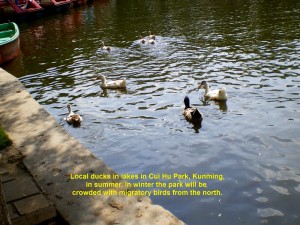
Local ducks in lakes in Cui Hu Park, Kunming, in summer. Migratory birds from the north gather here in large numbers.
Army Military Academy
After an hour of tour of Cui Hu Park, we crossed a busy road to an old dark yellow building which was once an army military academy for local and foreign students. It was founded in 1899 during the Qing Dynasty. After the fall of the dynasty, a new military academy was built to replace the old one.
It had produced many militarists and revolutionists. Now the building is a military museum showcasing the academy history and its achievements. Photos showing military activities in the olden days and military leaders, and some military arsenal relics are displayed in the museum, too.
Later, we went to visit an old temple, Yuantong Buddhist Temple which is not far from the museum.
Yuantong Buddhist Temple
Yuantong Buddhist Temple, located on the southern slope of Yuantong Hill, was built during the Nanzhao period in the late 8th. Century. Having a history of over 1,200 years, it has gone through a lot of reconstruction. Besides, it had changed names a few times. It was during the Yuanyanyou Peiod(1314-1320) that the temple was finally named as Yuantong Temple. Buddhists from far and wide make pilgrimage to this well-known temple.
Yi Liang Zhao Feng Restaurant, Yiliang
After a brief tour of the temple, we left Kunming City and headed 95 km east to a popular tourist destination of a different kind in Yiliang. It is known as Jiuxiang Scenic Spot which is famous for gorges and limestone caves.
On the way to Jiuxiang Scenic Spot, we stopped at a restaurant, Yi Liang Zhao Feng Restaurant, in Yiliang. We entered the restaurant and took our lunch like the way the Yi people usually had their meals. (Yi is a Yunnan ethnic minority.) We sat on low cylindrical-shaped stools round a large low table in a dinning hall. The floor was covered with long, green pine leaves. When food was served on the table we all tucked in and enjoyed the simple but delicious meal.
Jiuxiang Scenic Spot
Then we continued our journey to Jiuxiang. On arrival, we were greeted with some prominent red Chinese characters inscribed on a large rock. They mean that “If you don’t visit Jiuxaing, you need not come to Yunnan”. It implies that tourists should not miss that famous spot.
Jiuxiang Scenic Spot covers an area of 167 sq. km. of highlands, valleys, gorges, rivers, waterfalls and limestone caves. It has six main spots. The spot we visited is the most well-known, i.e. Diehong Bridge Zone.
Yincui Gorge
When we reached Jiuxiang, instead of walking down 300 steps to the bottom of the Yincui Gorge, we took a lift and went down 53 m. The river in the gorge has been raised to a height of over 6m by a dam. On this river, we took a short, slow boat-ride. While boating in the narrow gorge, we marvelled at its steep, rocky slopes.
After the ride, we walked down narrow steps in the steep Yincui Gorge to a large cave. The cave looked like a hall, known as Lion Hall. A concert was held once in that cave. As we went further in, we came across rapids and waterfalls. Besides, we saw some stalactites and stalagmites in a cave that looked like the popular Chinese legendary immortal characters, and the cave is called “Immortals’ Cave”.
Magic or Fairy Field
Walking further into another cave, we saw terraced ponds which looked like a terraced paddy field. That “field” is known as Magic or Fairy Field. When we reached the last cave, we saw lots of bats hanging upside down on its ceiling, and some flying in and out of the cave.
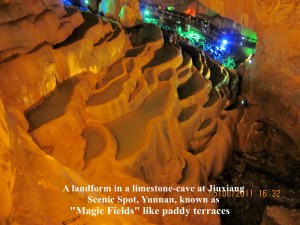
“Magic Fields” that look like terraced paddy fields in a cave of Jiu Xiang Scenic Spot, Yiliang, Yunnan
After going through a series of interconnected cooling and partially lit caves for two hours, we took a cable-chair ride to the place where our bus was waiting. As we had visited so many places in a day on the first day of our Yunnan tour, we felt exhausted. So, after dinner, we checked in and retired early at a downtown hotel known as King World Hotel.
Day 2 Monday, 6th. June 2011
Shilin(Stone Forest)
In the morning, we left Kunming City and headed 83 km east to a place of unusual but stunning landscape. It is a place where lots of tall, grey limestones are standing close to each other. The place looks like a forest. That is why the local people call it “Shilin“ which means “Stone Forest“.
Formation of Stone Forest (Shilin).
According to some geologists, the Stone Forest area was under the sea 260 million years ago. Plants and animals thrived in the sea then. When they died their matters settled on the sea-floor and covered with sediments. Later, under sediment-pressure and high temperature, they became limestone. Subsequently, tectonic plate movement happened and the region was uplifted and became land. Then weathering and erosion took millions of years to sculpture the limestones into the present beautiful shapes.
It was a long journey to Shilin Forest which is 97 km east of Kunming City. On arrival, we were surprised that the place was already crowded with visitors. Swee Poh, our local guide, helped us to explore the stone area for a few hours. We were totally captivated by the stunning and splendid landscape of various shapes and sizes of stones.
As we were walking in the “Stone Forest” we came across a few narrow passages. Some stones had fallen over and others had collapsed due to weathering and earthquake. There were several stones with their top parts fallen onto other stones and resting, dangerously, on them. It was scary to go under these hanging rocks.
While following the trails in the “forest” we saw some stone-structures that looked like animals, e.g. elephants, birds, dragons, etc. The trails criss-cross each other like a maze. Without Swee Poh’s guide, we would have lost our way in that “forest”.
Vantage Point
Finally, Swee Poh brought us to the highest point in the “forest“. It was a pavilion that was built on a rock and commanded a 360 degree view of the “forest” below. We had to climb up steep steps that were crowded with people to reach the pavilion. Standing in the crowded pavilion, we had a breathtaking sight of the forest of stones with some trees growing among them.
Yi Dance
Having spent a few hours enjoying the sights of the unique but strange stones, we stopped for awhile to watch a traditional dance performed by the Yi dancers. In the dance, elderly men were strumming their stringed instruments. They were dancing with a row of women. The dancers were dressed in their traditional costumes of the Yi ethnic minority. A few visitors joined them in their lively dance.
Rainbow Restaurant
Then we left the place for a popular restaurant, Rainbow Restaurant. Our tour-guide told us that there were some shops near the restaurant. According to him, they catered mainly for the domestic tourists, as their things were meant for them.
Tea-Shop
After lunch, we returned to Kunming City. On the way, we stopped at a tea-shop for awhile to learn about some Yunnan tea. It was selling a few kinds of Yunnan tea, like pu-erh, black tea, gold tea, etc. Then some of us bought them for our own consumption, and as presents for our relatives and friends back home.
Tea-Horse Route
Yunnan has been growing tea since over 2,000 years ago. 1,000 years ago, it became well-known for its tea in other regions. Consequently, an ancient tea-route was created to link Yunnan with India via Burma, with Tibet, and with Central China via Sichuan Province. As tea was carried by horses or mules during the ancient days, the route was known as Tea-Horse Route.
“Dynamic Yunnan” Performance at Yunnan Art Theater
In the evening, when we reached Kunming City, we had dinner and then went for a spectacular performance at Yunnan Art Theatre. It was known as “Dynamic Yunnan”.
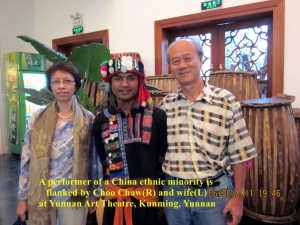
Choo Chaw and wife posing with a performer of a China ethnic minority at Yunnan Art Theatre, Kunming
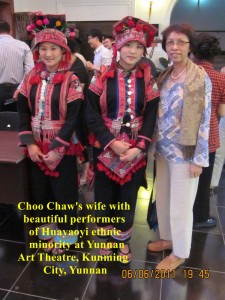
Choo Chaw’s wife posing with two performers of Huayaoyi ethnic minority at Yunnan Art Theatre, Kunming
Yang Liping
A famous Chinese performance artist of 30 years’ experience spent several years searching and training a troupe of over 60 performers from different Yunnan ethnic minorities. She is Yang Liping who has created and choreographed the performance that showcases the Yunnan legends, diverse traditions and cultures, and modern dances too. We watched it for one and a half hour. That energy-charged extravaganza filled us and the rest of the audience with awe all the time.
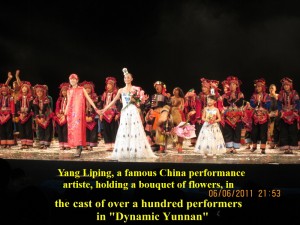
The whole cast including Yang Liping, a famous performance artiste, appearing on stage after the show in Yunnan Art Theatre, Kunming, Yunnan
Day 3 Tuesday, 7 June 2011
Journey to Dali City
At 7.40 a.m. we began our journey to another city, Dali City. It is 240 km west of Kunming City and has a population of over 3.2 millions. The road to Dali City was long, bumpy and dusty. Besides, it was winding and ascending in the first part of the journey. The road went through a few tunnels and an expressway was under construction then. After five hours of bumpy ride and two toilet stops, we arrived at Dali City, safely.
On arrival at Dali City, we were greeted by a lady of Bai ethnic minority, Kim Wah. She was wearing a striking traditional costume. It consisted of a red flowery blouse, pair of white pants with flower-designs and colorful headgear. She brought us straight to a large lake which has a shape of a human ear, and is, therefore, called Erhai(or Ear Sea). We spent a short time at a park by the lake admiring the beautiful scenery of the lake and the mountains, Cangshan, in the distance.
At the park, there is a large, white statue of a beautiful Bai lady. She was supposed to be a fisherman’s daughter.
Cangshan Scenic Spot
Then we went to a mountainous area known as Cangshan Scenic Spot. When we arrived there we took a cable car from Gantong Temple to a height of 2,560 m above sea-level. While ascending in the cable car for a distance of 2,630 m, we had a breathtaking view of the luxuriant Cangshan mountains, V-shaped valleys and Erhai Lake in the distance.
Soon we reached the higher ground and left the cable-cars. Coming out of the station, we saw the world largest Chinese chess board with large concrete “seeds” each weighing 65kg. Each “seed” had a diameter of 1.6 m and thickness 0.5m. The chess board’s length was 21m and width 19m.
Standing on the chess board, I could enjoy looking at the beautiful scenery of the lush-green mountains, a stream, Qingbi Stream, filled with small rocks, pools of turquoise but crystal clear water, V-shaped valleys and Erhai Lake which was far away.
Tianlong Babu Film & TV City
Having spent a few hours in that idyllic place, we descended by cable-cars. Later, we boarded our bus and went to another interesting place nearby.
Located in the centre of the Cangshan-Erhai Scenic Spot, that place was created as a site for shooting movies and TV shows. It was known as Tianlong Babu Film and TV City. It was so named as the first movie that was shot there was “Tianlong Babu”(or “Demigods and Semi-Devils“).
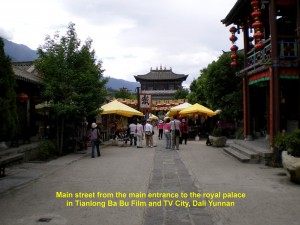
Main street from the main entrance to the Royal Palace in Tianlong Ba Bu Film & TV City, Dali, Yunnan
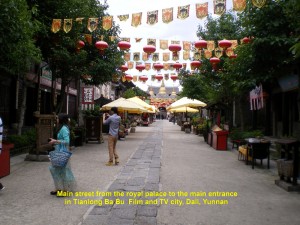
Main street from the Royal Palace to the main entrance in Tianlong Ba Bu Film & TV City, Dali, Yunnan
“Tianlong Ba Bu” Story
“Tianlong Ba Bu” (“Demi-Gods and Semi-Devils”) is a Chinese fiction-novel written by Jin Yong(born in 1924) in 1963-1966. The story is set in the Northern Song Dynasty(960-1127) of China. It is about the “complex, troubled relationships between the great multitude of characters from various empires” including the Liao, Dali, Western Xia and Tibet.
Tianlong Ba Bu Film & TV City Tour
On arrival at the site, my wife and I took a horse-coach ride to tour the place. As we moved along narrow roads, we saw Chinese ancient buildings built, specially, for shooting ancient movies and TV shows. Among them were palace, temple, shops, restaurants, rest-houses and residential houses.
More Photos of Tianlong Ba Bu Film & TV City
Bai Wedding Show
While we were there, we were lucky to watch a Bai wedding show. It was about a rich man who wanted his young, pretty daughter to get marry. So, one day he called all the young eligible bachelors from his village to gather in front of his house. Then his daughter stood on the second floor of his grand house and looked, carefully, for a handsome, young man below. When she spotted one she threw down a red flower-ball to him. He grabbed it and was immediately ushered into the house by the rich man’s servants. He was then dressed like a bridegroom and married the girl.
The picture below shows a girl throwing down a flower-ball:
A Hilarious Wedding Show
But during the actual show, when a girl threw the flower-ball down to a young man, he did not bother to catch it. It just landed a metre in front of him. Nevertheless, two rich man’s servants walked up to him, grabbed him and brought him into the house. All of us, spectators, laughed, loudly, at the way he was handled by the servants. Finally, the man was “forced” to marry the girl. Anyway, the whole show was just an act but we enjoyed watching it.
Ancient Dali City
The next place we visited was the old Dali town. This town, located near Tianlong Babu Film and TV City, is small and was established in the 14th. century during the Ming Dynasty. It was a home to the Bai ethnic minority. Now it is a tourists’ attraction as the town still looks ancient with old architectural buildings, narrow streets paved with stone-slabs and two large ancient gates, North Gate and South Gate.
In the town, the main street of 100 metres long, Fuxing Road, runs from the North Gate to the South Gate. There is a street known as Yangren Street(Westerners’ Street) that has new buildings of ancient Bai architecture. Cafes and western food are sold in some of these buildings.
Other ancient buildings in the town sell goods ranging from souvenirs, clothing, food, beverage to pottery, antiques and silver jewellery. Walking in this old place did give me a feeling that I was living in the olden days.
More Photos in Ancient Dali Town
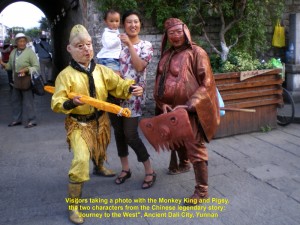
Visitors taking a photo with the Chinese lengendary Monkey King and Pigsy in Ancient Dali Town, Yunnan
Landscape Hotel, Dali
After the tour of the small, charming, quaint Old Dali Town, we went for dinner and checked in at a hotel known as Landscape Hotel. This hotel’s buildings look like the Bai buildings with white walls and grey roofs. There are many plants growing at the hotel. Besides, it has a beautiful courtyard with a pavilion and fish ponds in its compound. Indeed, the hotel lives up to its name, i.e. Landscape Hotel.
(continued on Yunnan Travel II)
Written by Choo Chaw, Kluang, Johor, Malaysia
Yunnan Travel II (Dali, Lijiang)
(continued from Yunnan Travel I)
Yunnan II
(Dali, Lijiang)
Day 4 Wednesday, June 2011
The Landscape Hotel served two types of food: Chinese and Western. As we had been eating Chinese food the last few days in Yunnan, we took a western breakfast for a change at the hotel. Then we left and went to a Bai village.
Bai Village
In the village, we saw Bai houses made of stones. But there was one old, quaint, large double-storey house that was made of wood. It was a showcase of a Bai residence, tradition and culture. We took a quick tour of the house and were treated to different kinds of Bai tea. Later, we watched two cultural shows in the house. One was a Bai fashion show and the other Bai wedding show.
Sa Village
Having learned something about the Bai culture and tradition at the old house, we left for a fishing village, Sa Village, that is by the Erhai Lake. On arrival, we all boarded a metal boat. The boatman with the help of some of us rowed the boat to a deep spot of the lake. Then a show started.
Cormorants
A man in another boat brought our attention to his birds, cormorants. He was holding a long pole with two birds perching on it. Besides, he had several other birds perching on his boat. At his command, the birds jumped into the lake. But, two stubborn birds refused to enter the water. The man had to used his pole to nudge them into the water.
We could see all the birds swimming, ecstatically, in the water. But, when the man shouted at the birds, they all dived into the water looking for fish. A few minutes later, one of them caught a large one and brought it to the surface for the owner. Later, another large fish was caught, and it was caught by three birds. The owner took the fish and rewarded all the birds with small fish he kept in his boat. One of our tour-members bought one of the fish for RMB 60 and the other fish was bought by a tourist in another boat. Later, we were brought to a lakeside where a Bai lady fried the fish for us.
Dwindling Number of Cormorants
According to a Bai lady on the lakeside, using birds to catch fish is not a common practice anymore, as young Bai people prefer to go to cities to look for more stable jobs. As a result, the number of cormorants has dwindled to less than 100, and they are now used for showing tourists their skill in catching fish in the lake.
Soon, we left Sa Village, and went to the old Dali Town to have lunch. In the afternoon, we left Dali and went north to Lijiang City in the higher mountainous area.
Black Dragon Pool Park, Lijiang
After three hours of safe but tiring journey, we reached Lijiang City which has a population of over 1.1 millions. In the city, a local guide, Lee, welcomed us. He brought us to an old, small but beautiful park, Black Dragon Pool Park.
Black Dragon Pool Park is a tourist attraction. It has a small lake, Black Dragon Pool(Heilongtan), surrounded by shady trees and well-kept gardens. An ancient Chinese marble bridge, Five-Arch Bridge, can be seen across the lake in the middle. Besides, some ancient buildings are found at the park, e.g. Moon-Embracing Pavilion or Deyue Lou(built in the late Qing Dynasty but it was rebuilt in 1963), Dragon God Temple or Longshen Temple(built by Naxi people in 1737) and Five-Phoenix Tower or Wufeng Tower(built in 1601 but moved there from Fuguo Temple, 30 km away, in 1979)
Old Lijiang Town
After going round the tranquil and romantic park once, we left for the Old Lijiang Town of 800 years old. In 1977, it was declared as a UNESCO world cultural heritage site. It is now a popular tourist destination.
Flowing through the town are three streams: East Stream, Middle Stream and West Stream. They originate from the main river, Yuhe River(Jade River) which flows from the Black Dragon Pool in the north of the town. Large colorful fish can be seen swimming in them.
The old Lijiang town has over 3,000 ancient Chinese wooden buildings. They are built, closely, along the streams and streets paved with stone-slabs. These buildings are now shops selling all kinds of local products that tourists might be interested in, and bars with red lanterns hanging outside them.
Located in the centre of the town is a small square where four streets converge. It was once a busy trading place for tea, and a busy market for the local residents.
Wooden Water-Wheels
When we arrived at the Lijiang old town in the evening, the first thing that attracted our attention was the twin large, wooden water-wheels. The Jade River kept them turning, continuously. Many tourists, including myself, liked to take photos with the wheels as a background. We noticed that the popular old town was crowded with tourists.
We spent a few hours browsing the shops, watching people dancing in a large circle in an open space(Yuhe Square), and looking at the quaint buildings of ancient architecture of the Naxi ethnic minority.
Later, we left the place and checked in and retired for the night at a nearby hotel known as Puruiduom Holiday Hotel.
Day 5 Thursday 9, June 2011
Naxi Village in Dongba Valley
In the morning, we traveled to a Naxi village in Dongba Valley which is 15 km north of Lijiang City. (Naxi is an ethnic minority.) That place was thronged with tourists. We joined them to learn about the Naxi people’s tradition, culture and religion.
When we entered the village, we saw small stalls on both sides of a path. The stall-keepers were ladies dressed in Naxi traditional costumes. They were selling arts, handicrafts, food, drinks, souvenirs, traditional clothes, etc. The path led to some Naxi houses, e.g. Taliu’s and Pumi’s. The houses were simple and made of logs. No modern gadgets, like TV, gas-cookers, refrigerators, etc. were seen inside those houses.
Naxi’s Gods
In one of the houses lived a Naxi priest. The Naxi people worship many kinds of gods(over 2,000 of them), including the God of Nature. They believe that all the gods can bless them with good luck, happiness and good harvests. Besides, the people believe that the gods can get rid of ghosts, like evils or monsters, that can harm their lives.
A Horror Demonstration
In a dark room in another house, we watched a middle-aged man showing off his scary prowess. He used his right foot to step on a red hot iron spade and then his tongue to lick it. His act shocked all of us, as the temperature of the metal spade was over 1,000 degrees Celsius. He would repeat that horror demonstration whenever a new group of tourists entered the room. According to a local guide, he had done that since he was a boy. (I will not recommend anybody to watch that performance if he has a faint heart.)
In an open space, a young man was seen climbing up and down a tall ladder with sharp swords as its rungs(sword ladder). He could do it, easily, without his soles getting cut. He was an amazing person.
Lovers’ Room or Youth Cabin
There was an interesting room in a Taliu house. According to the Taliu’s custom, if a girl wants to look for a future husband she will, secretly, invite a boy to a room(Lovers’ Room or Youth Cabin) provided for her to talk about love. She can do this on different nights with different boys until she gets the right one to marry. This is quite an unusual way of allowing a young girl to date a young boy in a room in the absence of their parents.
After seeing all the activities and learning about the Naxi’s tradition, culture and religion in the village, we went to a popular scenic spot, Yulong Snow Mountain. It is not far from the village.
Yulong Snow Mountain
Yulong Snow Mountain is very important to the Naxi people. They consider it a sacred place and call it Wulu which means Silver Rock. The mountain has 13 steep peaks that are over 5,000 m in height. The highest peak is 5596m above sea-level. As the combination of the peaks looks like a large flying dragon from a distance, the Naxi people call the mountain, Yulong Mountain(Jade Dragon Mountain). They also call it Black and White Mountain because of its colours.
Yun Shan Plateau
While we were on our way to a cable-car station, we saw the mountain not very far away, but it was partly covered by clouds. Then we took a cable-car to a higher ground, Yun Shan Plateau, which is over 3,000m above sea-level. Coming out of the station, we walked on a wooden path which cut across the plateau of pine trees to a small grassland.
Disappointment
Thirty minutes later we reached the grassland. There were many tourists on the edge of the grassland. We joined them and hoped to see the Yulong Snow Mountain at close range. But, unfortunately, the mountain was completely covered with clouds then. We stayed around for awhile hoping that the clouds would disappear.
Several minutes had passed, but the stubborn clouds were still covering the mountain. As we could not wait for the whole day, we left the place with great disappointment. We walked back, took a cable-car and descended to the lower cable-car station.
Baishui River(White Water River)
Outside the station, we took a 12-seater car to a river known as Baishui River(White Water River). The river was wide and shallow, and its water was crystal clear and cold. It was flowing from the Yulong Snow Mountain and other mountains. From the river we saw a spectacular view of the landscape of the partially cloud-covered Yulong Snow Mountain, the pine tree-covered mountain-slopes and the river.
Walking further down the river, I was surprised to see the river flowing into terraced ponds which looked lake paddy-terraces. It was a splendid sight with the ponds added to the landscape.
Yaks
While we were enjoying the scenery, we saw some large yaks with colorful saddles on the river side and in the shallow river. These animals are tame oxen with long curved horns and hair, They are used by their owners to help them to earn some extra money. For a small fee, a tourist can ride a yak to the middle of the shallow river and back.
As we had been told by our local guide about the risk of riding a yak, none of us in our tour group wanted to ride one. We feared that tiny creatures hiding in its long hair might crawl into our groins and cause a terrible itch.
V.I.P. Restaurant
Later, we left the place and traveled south to another place, Jade Water Village. On arrival, we had lunch at a restaurant, V.I.P. Restaurant. As the restaurant was on a high ground, we could see the wide and long Dongba Valley where the Naxi people have been staying for many generations.
Yushui Xiang(Jade Water Village)
After lunch, we entered the Jade Water Village(Yu Shui Village)which is next to the restaurant to learn about the Naxi people’s tradition, culture and religion. In the village, there is a prominent, shining, tall, golden statue of the God of Nature. The Naxi people worship Him for good harvests, peace, harmony, luck, happiness, etc. In return, they promise Him to protect Nature’s forests, animals, plants, etc. and keep the environment clean. Their religion is known as Naxism or Dongba religion.
In the village, there are other attractions, like clean ponds with salmons, Dongba Museum, Calligraphy and Painting Institute, Naxi Ancient Village, Wine and paper workshops, etc.
After a tour of the quiet place, we travelled back to Dali City. On arrival, we had dinner, and then visited the old Dali town again hoping to buy something for ourselves, loved ones and friends. At night we stayed at the magnificent Landscape Hotel, the same hotel we put up two days ago.
(continued on Yunnan Travel III)
Written by Choo Chaw, Kluang, Johor, Malaysia
Yunnan Travel III (Kunming City)
(continued from Yunnan Travel II)
Yunnan Travel III
(Kunming City)
Day 6 Friday, June 2011
Travelling Back to Kunming City
At 8 in the morning, we travelled from Dali City back to Kunming City. After over four hours of sitting in the moving bus and rocking inside whenever it travelled on bad roads, we, finally, reached the city. We, immediately, went to a restaurant for a late lunch.
Xishan Scenic Spot(West Hill Scenic Spot)
After lunch, we went to a famous Yunnan tourists’ spot, Xishan Scenic Spot(West Hill Scenic Spot). Located close to the Dianchi Lake and 15 km from Kunming City, this lush-green mountainous area has some places of interest to visit. But the only place our local tour-guide, Swee Poh, thought it was worth visiting was the Dragon Gate. He told us that some Chinese leaders had visited that spot, like Zou Enlai, Liu Shoqi, Jiang Zemin and Zho Rongji. Besides, foreign dignitaries, like Queen Elizabeth(Britain), Henry Kissinger(ex-Secretary of State of USA) and Helmut Kohl(ex-Chancellor of West Germany), had visited the place too.
On arrival at the scenic spot by our tour bus, we hopped onto a 10-seater car and went straight to the entrance to Dragon Gate near the Taoist Sanqing Pavilion. Starting from the entrance, we climbed a long flight of stairs to the Dragon Gate.
The flight of stone-stairs is built on the steep slope of the Xishan Hill(Western Hill). Along the flight, there are some interesting things to see, such as the breathtaking view of the large Dianchi Lake, Kunming City in the distance and temples along the way.
Dianchi Lake
Dianchi Lake which is at the foot of Xishan Hill covers an area of 200 sq. km. Shaped like a crescent, it is 39 km long and 13 km wide at the broadest. Over 20 rivers from the surrounding mountains flow into the lake. It is the largest freshwater lake in Yunnan and the 6th. in China.
Temples
Among the temples along the flight of stairs are Sanqing Pavilion, Lingguan Pavilion, Doumn Taoist Pavilion, Hall of the Divine Parents and Daitian Pavilion. But the most important thing that all the tourists want to see at the scenic spot is the little, simple arch known as Dragon Gate. It is located at 2300m above sea-level and 300m above Dianchi Lake. Most of these structures were constructed during the Ming and Qing Dynasties.
As we went up the crowded stairs, we stopped at some of the temples to find out the kinds of deities that were worshipped. We also stopped at different heights to see the stunning scenery of the Dianchi Lake and the city.
God of Fortune
In the middle of the climb to the Dragon Gate, there is a dark red statute of a fierce-looking deity holding a golden egg in his left hand and a sword in his right hand. Besides, he is stepping on the head of his carnivorous pet with his right foot. Two Chinese characters are written on his tummy that say he is the God of Fortune.
According to our tour-guide, Swee Poh, this deity may give you wealth if you can jump and touch his golden egg. While I was there, I watched with amusement some tourists trying their luck. As the God of Fortune was standing on a rock, many failed to reach it. Those who failed would touch his pet’s nose hoping that it would give them wealth instead.
Dragon Gate
After less than an hour of slow climbing and occasional, accidental jostling against some people on the crowded steps, we, finally, reached a spot where we could see the Dragon Gate that was 200m further up on a cliff. To reach that structure, we had to climb narrow, steep steps through a small but short tunnel, Yunhua Cave.
According to the information given there, there was a diligent Taoist monk who took 14 years(1781-1795) to cut a path and tunnel(Yunhua Cave) on the cliff from the Phoenix Rock to Dragon Gate and another tunnel(Ciyun Cave) higher up. The person who risked his life doing that on the cliff of Xishan Hill(West Hill) was Wu Laiqing.
The Dragon Gate is a well-known small, low arch of height about 2m and width 1m. Just below the arch is a “dragon ball“. Lots of people like to touch it, as they believe that the “dragon” will bring them riches. Adjacent to it is a small temple, Daitian Temple which houses three divine deities.
Spectacular Panoramic View
When we reached the Dragon Gate, we felt a sense of achievement in climbing up so high. Standing on a platform near the Dragon Gate, we got a spectacular panoramic view of the large lake and the city. But when I looked down below it, I could not see the slope of the hill. Then I wondered how the people in the olden days managed to build such a platform on the vertical slope of the hill.
A moment later, we saw heavy rainfall over Kunming City in the north. As we had seen enough of the place, we descended the hill. When we reached the bottom, we were caught in a heavy downpour. A few minutes later when it stopped, we went back to our bus. It then took us to a Chinese medicine shop in the city. In the shop we were introduced to some “miracle cure” medicines. Two of our tour-members bought some of them. Later, we checked in at Yunnan King World International Hotel where we had our dinner and retired for the night.
Day 7 11. June 2011
Day 7 was the last day of our tour in Yunnan. Our local tour guide would bring us to shopping malls in the Kunming City centre to buy something to bring back home.
Jinma Biji Square
But before we went shopping, Swee Poh brought us to a popular place known as Jinma Biji Square(Golden Horse and Jade Rooster Square) located along Jinbi Road in the city centre. In that square, there are two beautiful, large, similar arches, measuring 12 m high and 18 m wide. One of them is known as Jinma(Golden Horse) Arch and the other Biji(Jade Rooster) Arch. These arches are over 100m apart. They were recently built to replace the old ones which were destroyed during the China Cultural Revolution in the 1960’s. The arches look majestic, exquisite and very ancient. They have become one of the Kunming City’s iconic landmarks.
Shopping Malls
Having spent sometime in the square, we crossed Jinbi Road and entered an area of some large shopping malls, like Brilliant Plaza, Splendid Plaza, Yilong Building, etc. These malls are located along Bu Hang Road between Jinbi Road and Tong Fong Xi Road selling branded goods. In this shopping area, there is a large arch which is similar to the two in the Jinma Biji Square. It is known as Zhongai(Faithful Love) Arch.
Bu Hang Road is closed to the traffic and has become a pedestrian walkway with a few rows of shady trees growing in the middle. While we were there we saw five men, each holding a big notice-board telling the public that a person was very sick and required donation for large medical expenses. Many sympathizers donated money which they put into a red tin placed in front of them. My wife and I were touched by the plight of the sick and donated some money, too.
Back Massage by a Blind Man
We spent much time window-shopping inside some malls and browsing some roadside stalls, too. Then we went for a back massage under the trees. My masseur was an elderly blind man, Mr. Chou, who had been in that profession for 30 years. He had done a good job even though he had given me a few painful rubs on my back, shoulders and arms.
Later, we left the shopping centre for lunch at the Weilong Hotel restaurant nearby. After lunch we visited a few more places, e.g. a large shop selling all kinds of herbs for health and diseases, a silk factory selling quilt and other silk products and a coffee museum. Then it was time to go back to our country, Malaysia.
Departure
After dinner, we went to the Kunming Airport which was near the city and bade farewell to our local guide, Swee Poh, and tour bus-driver, See. At 11 p.m. (local time), we departed Kunming and flew straight back to Singapore Airport. Less than four hours later, we arrived at the airport where our tour company’s bus brought us back to our respective hometowns.
Well, that was our 7-day tour in Yunnan, another successful and memorable one which I am glad to add to my long list of travels.
Thank you for reading this travel and hope you have gained some information from it. If you have gone there before, I hope this has taken you down memory lane.
Acknowledgement
Here, I would like to thank the tour company, Vacation Hub Travel & Tours Sdn. Bhd., for arranging the interesting tour, its helpful employee, Vin Ng, for showing us a preview of Yunnan tourists’ destinations, its cool, caring and efficient employee, Kent Tay(the tour leader), the Kunming careful and super driver, See, and, lastly but not least, the three diligent China tour guides, Swee Poh(Kunming), Kim Wah(Dali), and Lee(Lijiang).
The End
Written by Choo Chaw, Kluang, Johor, Malaysia

